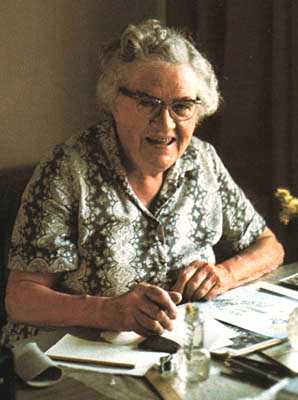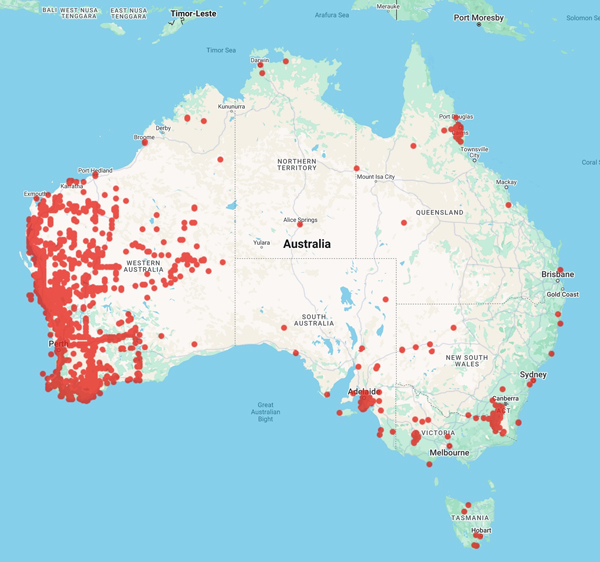
Council of Heads of Australasian Herbaria
Australian National Herbarium
Biographical Notes
 |
Council of Heads of Australasian Herbaria |
 Ashby,
Alison Marjorie (1901 - 1987)
Ashby,
Alison Marjorie (1901 - 1987)Miss Alison Ashby, South Australian flower painter died on August 12, 1987 in her 86th year and was buried in an impressively simple ceremony at the Inman Valley cemetery amongst the trees and plants she loved so much.
Miss Ashby had a life long interest in natural history and Australian plants of which she propagated, planted and distributed thousands in her lifetime.
She started painting in the early 1930's at least, and the substantial collection of about 1400 paintings is deposited at the Adelaide Botanical Garden. They form the basis of the now widely available popular wild-flower postcards initially sold at the South Australian Museum and Botanic Garden. She developed a painting technique admirably suited to reduction in size for reproduction. Miss Ashby awed her friends and admirers by hurtling between the wild flowers of Western Australia and the Alpine herbfields in the east, almost annually, in a long series of station-wagons, to paint from material freshly collected in the field.
For a long time she provided cut flowers for a continous display at the Museum. These came from the family garden at 'Wittunga', her own reserve 'Watiparinga' at Belair, her nephew's farm 'Mt Alma' at Inman Valley and the Burdett's garden at Basket Range. Later Miss Ashby donated the 'Watiparinga' reserve to the National Trust. Her niece Mrs Enid Robertson is now active in maintaining it. She was always helpful to taxonomic botanists and was able to direct them to specific localities to find plants. She tagged particular bushes so that flowering and fruiting specimens could be drawn from the same plant.
Her 80th birthday was celebrated by the publication of 'Alison Ashby's
Wildflowers of Southern Australia' published by the South Australian Museum
Board where 34 examples of her paintings are included as well as a portrait
of her at work.
She is commemorated by Acacia ashbyae and Solanum
ashbyae. Her legacy of land, plants and paintings will be enjoyed by many
for years to come.
D.E. Symon, 1987
Source: Extracted from: ASBS Newsletter No.52, 1987
Data from 8,226 specimens
